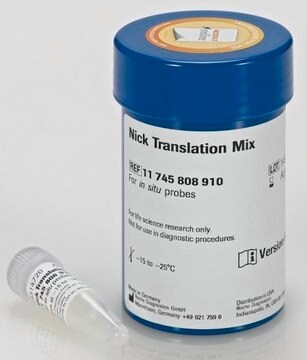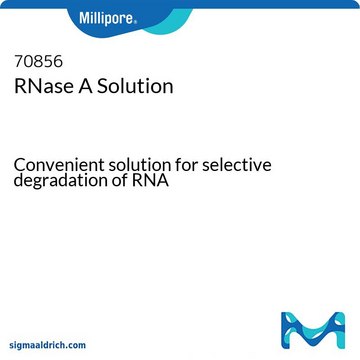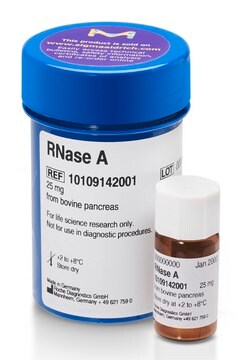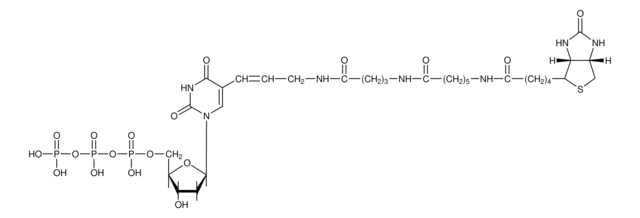Wichtige Dokumente
11534378910
Roche
Tetramethyl-Rhodamine-5-dUTP
Synonym(e):
Rhodamine-5-dUTP tetralithium salt, Tetramethylrhodamine-5(6)-(5-[3-carboxamidoallyl]-2′-deoxyuridine 5′-triphosphate)
About This Item
Empfohlene Produkte
Qualität
Molecular Biology
Qualitätsniveau
Assay
97.7% (HPLC)
Form
solution
Mol-Gew.
990.5
Verpackung
pkg of 25 μL (25 nmol; 1mM)
Hersteller/Markenname
Roche
Konzentration
1.0 mmol/L (Tetramethylrhodamine-5-dUTP (Abs. 551 nm))
Farbe
clear red
mp (Schmelzpunkt)
~0 °C
Löslichkeit
water: miscible
Lagertemp.
−20°C
Suchen Sie nach ähnlichen Produkten? Aufrufen Leitfaden zum Produktvergleich
Allgemeine Beschreibung
Anwendung
Qualität
Hinweis zur Analyse
Sonstige Hinweise
Lagerklassenschlüssel
12 - Non Combustible Liquids
WGK
nwg
Flammpunkt (°F)
does not flash
Flammpunkt (°C)
does not flash
Hier finden Sie alle aktuellen Versionen:
Besitzen Sie dieses Produkt bereits?
In der Dokumentenbibliothek finden Sie die Dokumentation zu den Produkten, die Sie kürzlich erworben haben.
Kunden haben sich ebenfalls angesehen
Global Trade Item Number
| SKU | GTIN |
|---|---|
| 11534378910 | 4061838703231 |
Unser Team von Wissenschaftlern verfügt über Erfahrung in allen Forschungsbereichen einschließlich Life Science, Materialwissenschaften, chemischer Synthese, Chromatographie, Analytik und vielen mehr..
Setzen Sie sich mit dem technischen Dienst in Verbindung.





